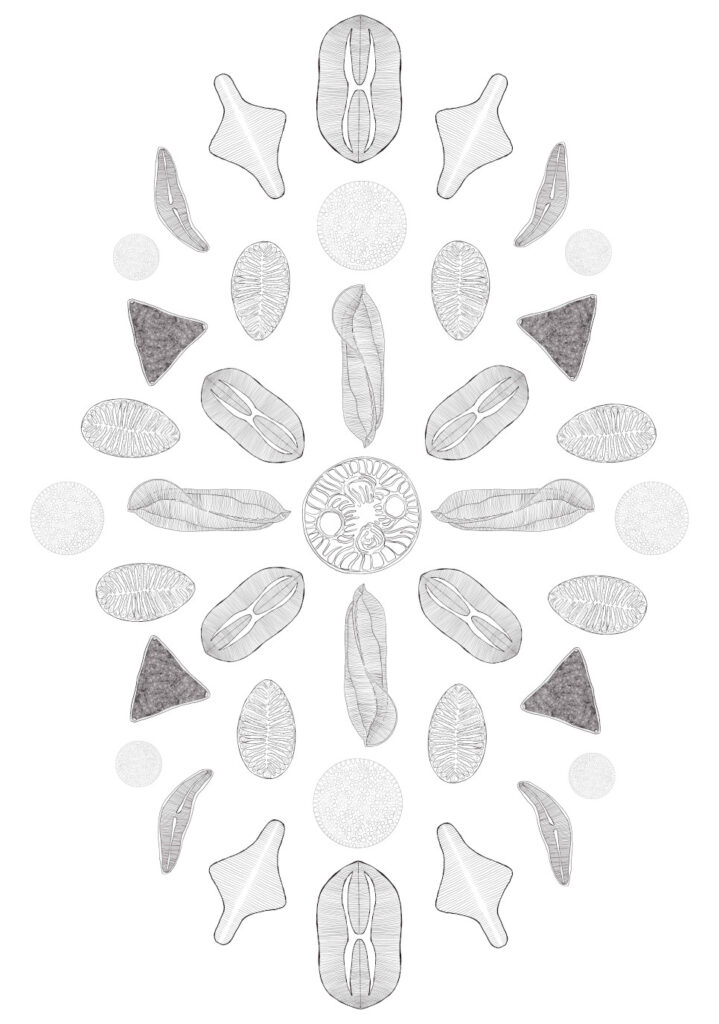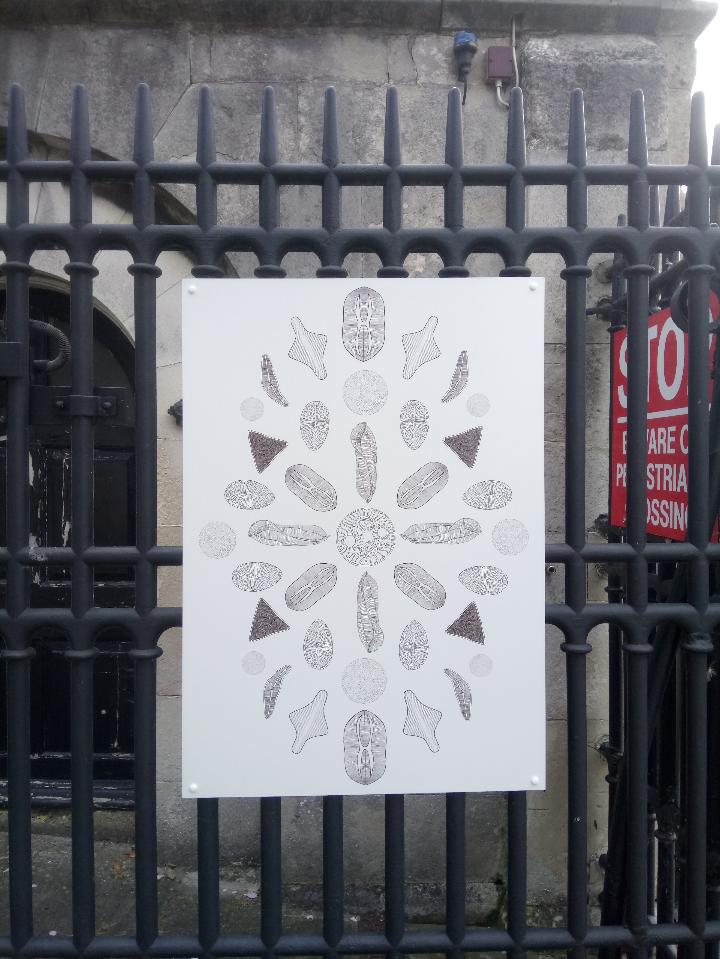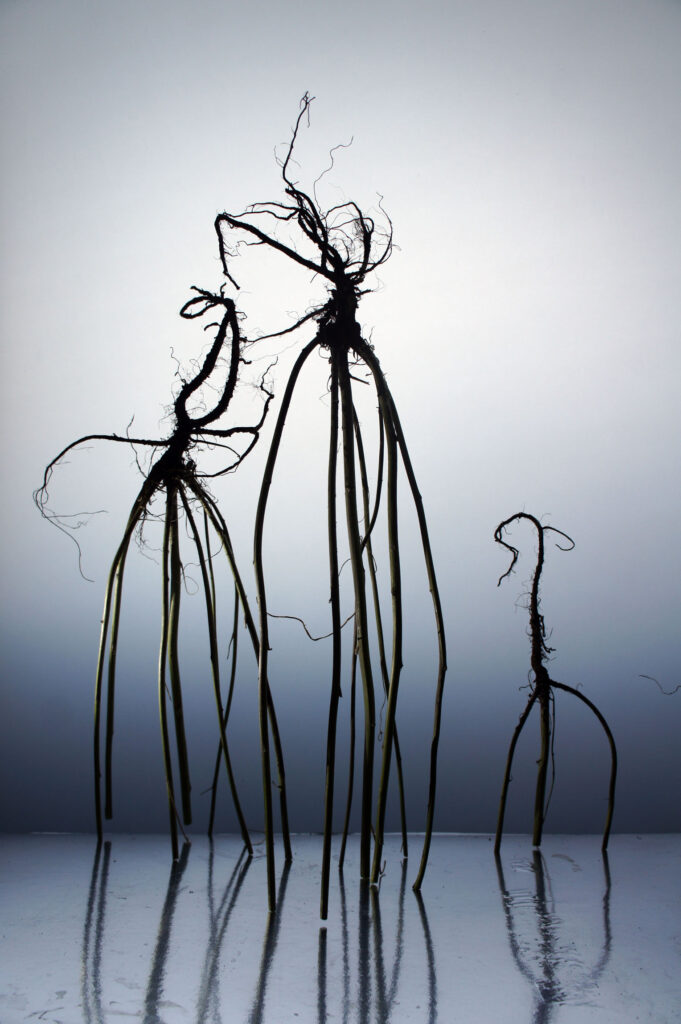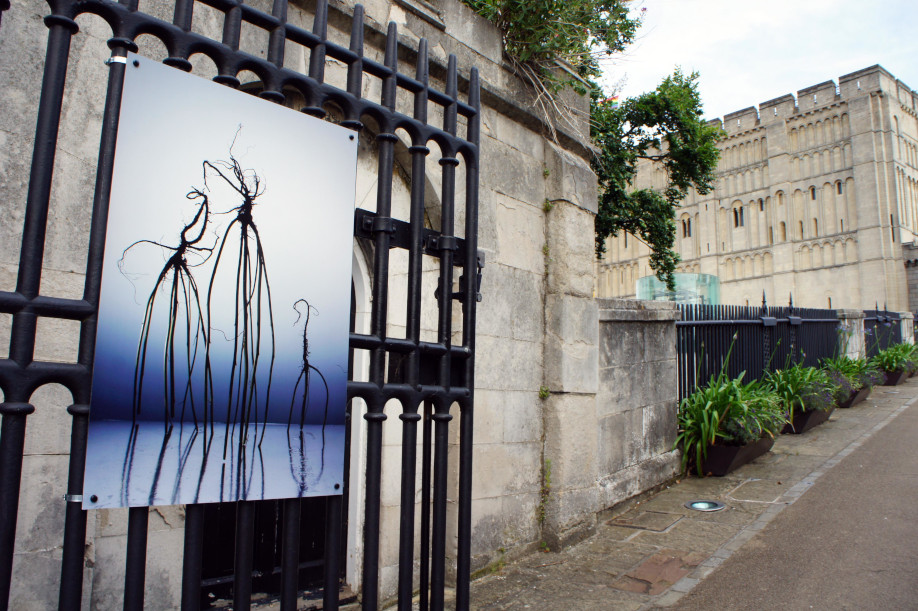Castle Museum Gates
Castle Hill, Norwich, NR1 3JU on the Edible East Art/Science Trail
Showing the work of artists Kaitlin Ferguson kaitlinferguson.com and Jennie Pedley jenniepedley.co.uk
Diatoms and The Broads
Kaitlin Ferguson’s drawing of diatoms links to local research and to Norwich Castle Museum. Diatoms are found all over our planet and come in a beautiful range of shapes, their cells being enclosed in glass-like shells. Diatoms live where it’s damp; in rivers, oceans and soils. They belong to a group known as algae, which are responsible for half of the oxygen-producing photosynthesis on Earth.

Kaitlin Ferguson

Kaitlin Ferguson
Norwich Research Park Inspiring Science: The University of East Anglia and Earlham Institute on Norwich Research Park are working on a ground-breaking collaborative project that is sequencing 100 diatom species to investigate their roles in capturing carbon dioxide and forming the foundation of diverse aquatic food webs. These insights will help advance diatom-based biotechnology, which can be used in areas such as production of antioxidants and dietary supplements, and the development of biofuels.
Scientists at the Earlham Institute are also interested in how some of these delicate species can live in the freezing temperatures in Antarctica. This information can help us understand what guides diatom evolution, giving us insights into the biology of all organisms on earth! Also, due to climate change the more we know about how organisms can tolerate fluctuating environments, the better!
Families, Roots and Forest Food Gardens
The family of Brassica plants in this image communicate through their roots in a network of underground life. Artist Jennie Pedley was inspired to make this image by conversations with scientists at the John Innes Centre on Norwich Research Park. Scientists are studying the effects of seasonal and environmental change on members of the Brassica family, including broccoli, radish and cabbage. This information will be used to improve the reliability, yield and quality of these important crops.

Jennie Pedley

Jennie Pedley
During the food shortages of World War II, a 'Dig for Victory' exhibition at Norwich Castle Museum inspired the public to grow their own food. Today we often purchase our food, and healthy food can be expensive. But we can work together to improve the current ways we grow, process, transport and package our food to increase suitability and reduce the impact on our environment and health.
Norwich Research Park Inspiring Science: Scientists at the John Innes Centre on Norwich Research Park are studying the effects of seasonal and environmental change on members of the Brassica family, including broccoli, radish and cabbage. This information will be used to improve the reliability, yield and quality of these important crops
Local artists Jennie Pedley and Chris Jackson have created the first Edible East Art/Science Trail to start community discussion about food sustainability. Explore our website and get in touch if you would like to start a community forest food garden.
More about Norwich Castle at the Norwich Castle Museum & Art Gallery website.
